Speed 4.7 knots (kts) Course 55.6 Location Canada Basin, 78.35° N, 150.98° W Depth 3829 Meters
SPECIAL FEATURE DISCUSSION:
(see previous journal for the questions.)
The surface water temperature during my freezing water demo was about -1.1° C (about 30° F.) The key to this water being liquid below the 'freezing point of water' is its salinity. On the screen shot of our water monitoring system below you'll notice that the when I did the demo the surface salinity was about 26.2 PSU, which equates to .262% or 26.2 parts per thousand. (This means there were 26.2 grams of salts dissolved for every 1000 grams of water, which is actually pretty low compared to world-wide averages closer to 3.5% salinity for the Earth's oceans.)
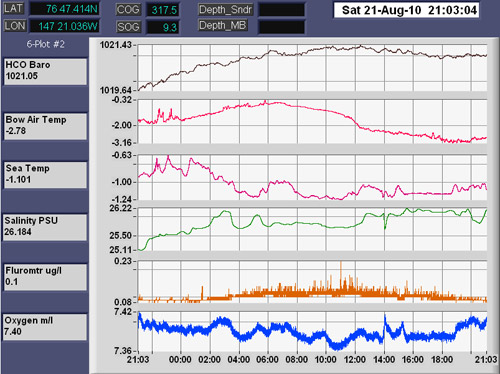
When salts are dissolved in water it inhibits ice formation, lowering the freezing point. So we can see liquid water at temperatures below the freezing point of fresh water here in the Arctic Ocean. The same principle is at work when salt is used to melt ice on roads and sidewalks.
TODAY'S JOURNAL:
Whew. It is nearly dinner time and my head is whirling from one of the most exciting days I've had in a while, and it's far from over.
Last night I played bingo in the mess hall (didn't win, though) and then watched Clash of the Titans on the big screen in the Helicopter Hangar. That was fun but really chilly- should have worn my long undies. To compensate for the later-than-usual night I slept in some today, as many seem to do on Sunday mornings. Things looked good, though, when I looked out my porthole and saw gleaming ice in the sunshine- much more ice & sun then I'd seen in a while.
After breakfast I went up to the bridge to see the sights. Soon I saw a Black-legged Kittiwake, a type of gull we've been seeing on and off for most of our cruise. Then I realized that several were whirling around in our wake, between us and the Louis. A big white gull swooped through that dwarfed the kittwakes- a Glaucous Gull. After a while a small group of gulls flew by the bow and there were two white jobs in with the kittiwakes. I initially thought that another Glaucous Gull had joined the group but then it dawned on me that these two weren't appreciably any bigger than the kittiwakes. Glaucous Gulls have about 60-inch wingspans compared to the 36-inch wingspan of Black Legged Kittiwake so that was clearly out. The choice for an all-white gull up here is Ivory Gull, one of my most wished-for birds to see! I'm still tingling with the sighting. If I had to rank the two things I most wanted to see in the Arctic it would be Ivory Gull and Polar Bear. Ivory Gulls may be to North American birds what Polar Bears are to North American mammals. They are high on about any birder's wish list but you usually have to go to very high latitudes, especially in the summer, to see one. Like Polar Bears, Ivory Gulls may be threatened by the impacts of global climate change. This was the last species of breeding North American gull that I hadn't seen prior to today.
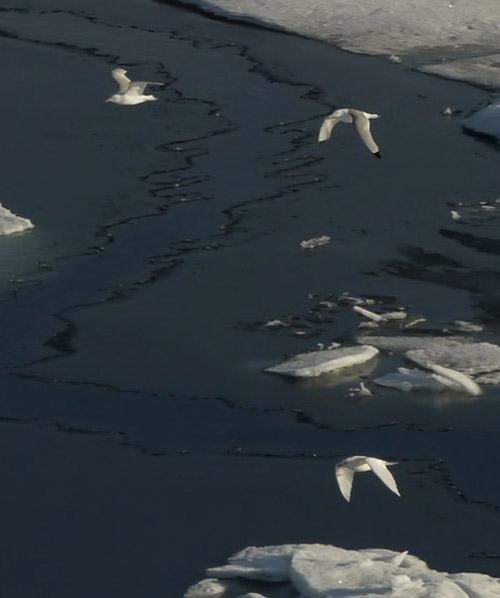
As I was astern looking for birds again my pager went off. (For safety everyone on board has a pager and when it rings you go to the nearest phone and call the extension on you page.) It was chief scientist Brian Edwards and he had me come up to the computer lab for an update. I needed to be at a flight briefing on the bridge at 12:30- I was going over to the Louis on its helicopter!! I had never had a helicopter ride before so I went from the excitement of seeing a special bird to the anticipation of flying in a whirlybird.
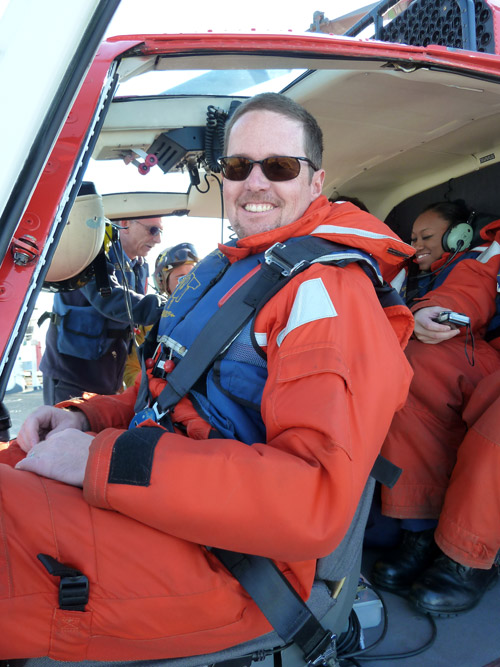
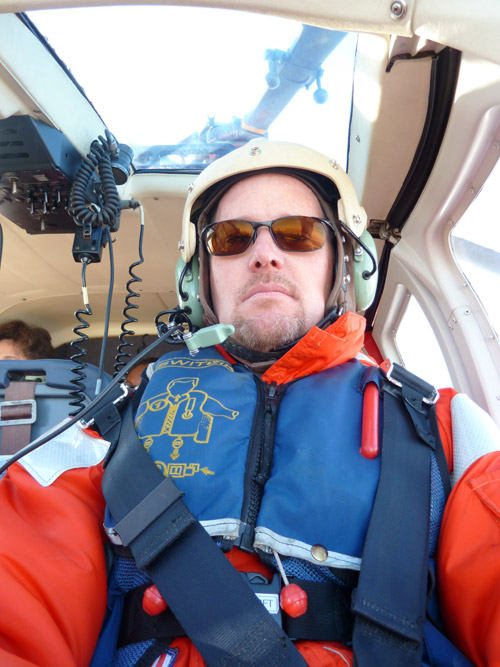
The flight from the Healy to the Louis was fast and thrilling and surprisingly smooth. I'd seen the helicopter take off several times and knew it would dip forward off the Healy's flight deck when it left but that was still a pretty wild swoop into the air. The day couldn't have been better, with sunshine brilliantly lighting the ice from horizon to horizon. It was really different and cool to see the ships from a bird's-eye view. They got pretty small pretty fast as the helo raced skyward before looming large again on approach and landing.
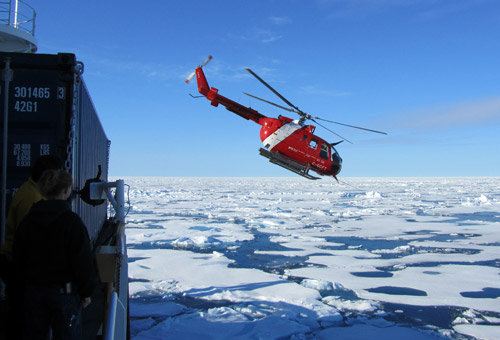
The visit on the Louis was also fantastic. I really appreciated the chance to compare the two ships and get the feel of the Canadian side of the expedition for a few hours. It was fantastic to also get a first-hand look at the scientific equipment used and the types of information that the Louis is gathering for the international effort. While we were there the Healy navigated around the Louis some to try to solve an ice problem, giving us an excellent look at our floating home of the last three weeks. I enjoyed seeing my friends over on the Healy out taking pictures of the Louis while I was out taking pictures of the Healy. Stay tuned for more detail on what I saw and learned on the Louis soon!
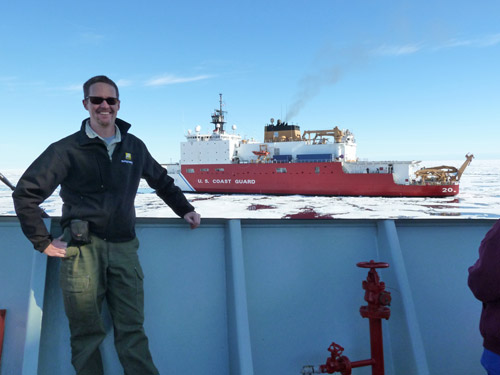
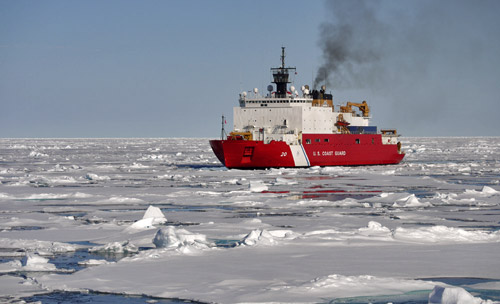
I'm off in a few minutes to give tonight's science talk on bird migration. One great thing about this cruise is that every few nights one of the members of the team give a talk on their line of research or work. One of the things I love about science and science teaching is that there is always more to learn. I'm very pleased to have been invited to speak about birds tonight- wish me luck!
SPECIAL FEATURE:
Safety is a big issue in the Arctic, and both the Canadian and U.S. Coast Guards take this topic very seriously. What is some special safety equipment that you would be put on board a helicopter for Arctic ship-to-ship and ice recon flights?
That's all for now! Best- Bill


Comments